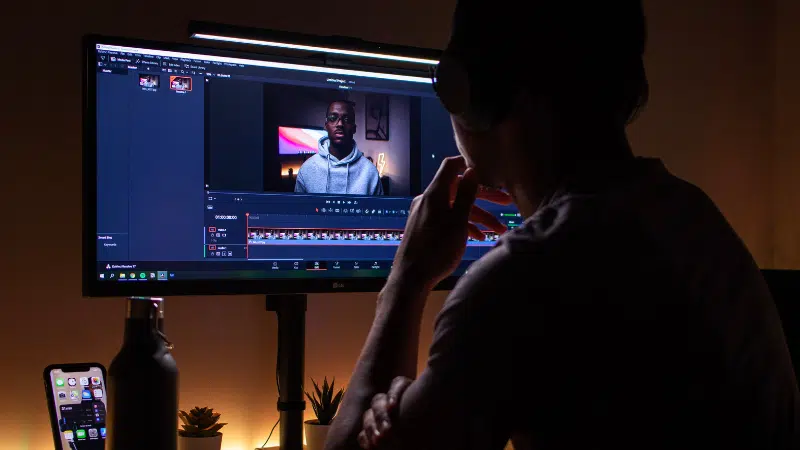If you upload a video containing copyright-protected material, you could end up with a Content ID claim. In this post, we’ll break down what this means and what to do if this happens, including next steps and how Symphonic can help you through it. Here’s the rundown on YouTube Content ID Claims and Disputes with Symphonic.
Understanding YouTube Content ID Claims and Disputes
Let’s break it down…
YouTube Content ID claims are issued by companies that own music, movies, TV shows, video games, or other copyright-protected material.
Depending on the copyright owner’s policy, some Content ID claims prevent certain material from being available on YouTube. Others allow the video to remain live while directing the advertising revenue to the claimed content’s copyright owners, like music.
So, what happens next?
You’re probably thinking, “Shit… am I in trouble?” In most cases, getting a Content ID claim isn’t a bad thing for your YouTube channel. It just means we found some material in your video that’s owned by someone else.
- A copyright claim is different from a copyright strike, which is what happens when your content is taken down (not blocked).
- Copyright strikes are dangerous to the status of your channel, but copyright claims will only result in ads being placed on your video or blocking. These aren’t harmful to your status as a YouTube channel.
It’s up to copyright owners to decide whether or not others can reuse their original material. In many cases, copyright owners allow the use of their content in YouTube videos to put ads on those videos. These ads may play before or – if the video is longer than 10 minutes – during the video.
However, there are some cases where copyright owners don’t want their material reused:
- Blocking a video: Sometimes, copyright owners may block your video, which means people won’t be able to watch it. They can decide to block your video worldwide or just in certain countries.
- Muting a video: If your video contains copyright-protected music, the owner may choose to mute it. This means that people can still watch your video, but they won’t be able to hear the soundtrack. This won’t affect your account standing.
- Blocking certain platforms: In some cases, copyright owners may restrict the devices, apps, or websites on which their content can appear. These restrictions won’t change the availability of your video on YouTube.com.
Can I claim remixes?
Unless you have the rights to claim a remix of your original, you cannot claim one. Also, remixing popular songs cannot be uploaded to our platform. Every piece of work must have the appropriate rights to be distributed and/or claimed via the YouTube Content ID program.
Claims from Symphonic
If you see us claiming music on your profile, please do not worry. This is the automatic YouTube Content ID system, and it can be released so that we don’t monetize on your videos but do so on any other videos across YouTube.
——
🧠 Feed your brain…
Does Your Music Qualify for YouTube’s Content ID?
How To Promote Your Music Video in 7 Easy Steps
Best YouTube Promotion Channels To Submit Your Music To
——
What’s a dispute, and what happens after?
A dispute is if the user that received the claim wishes to dispute the claim. This happens if a claim occurs on their channel and they wish to ensure that whoever filed the claim doesn’t claim it.
After you submit your dispute, the copyright owner has 30 days to respond. During this time, the claim will be temporarily released. If they don’t respond within 30 days, their claim on your video will expire, and you don’t need to do anything.
There are a few things that the copyright owner can do after you dispute:
- Release the claim: If they agree with your dispute, they can choose to release their claim. If you were previously monetizing the video, your monetization settings would be restored automatically when all claims on your video are released.
- Uphold the claim: If they believe their claim is still valid, they can choose to uphold it. If you feel it was mistakenly upheld, you may be able to appeal their decision.
- Take down your video: They can submit a copyright takedown request to remove your video from YouTube, which means you’ll get a copyright strike on your account.
While your dispute is active, two things may happen to your monetization depending on the policy that the Content ID claimant has set for the claim:
If the policy is set to block or track, this policy will be temporarily lifted until your dispute is resolved. During this time, your video will not be monetized.
If you have monetization enabled on your video and the claimant wishes to monetize their claim on the video, we will continue to show ads on it and hold the earnings separately. As soon as the dispute is resolved, we’ll pay the revenue earned during the dispute to the appropriate party. // Learn more about monetization during a Content ID dispute here.
In Conclusion…
We hope this has shed some light on the YouTube Content ID claim and dispute process. We know it can seem complicated, but that’s why we’re here to help. If you still find yourself with some questions that haven’t been answered from this post, feel free to submit a request here. We’ll do our best to help you out.
In the meantime, you got this!

